There’s no better time to recognize the creativity and determination of female artists than during Women’s History Month! We’ve taken hundreds of years of history and picked 12 female artists who pushed boundaries in art and society. Our list presents a wide range of cultures, styles, and techniques so that kids can see the rich diversity of the art world. Whether it's the timeless masterpieces of long-ago painters or the vibrant, thought-provoking creations of today's contemporary artists, we hope this list inspires your children to learn something new!

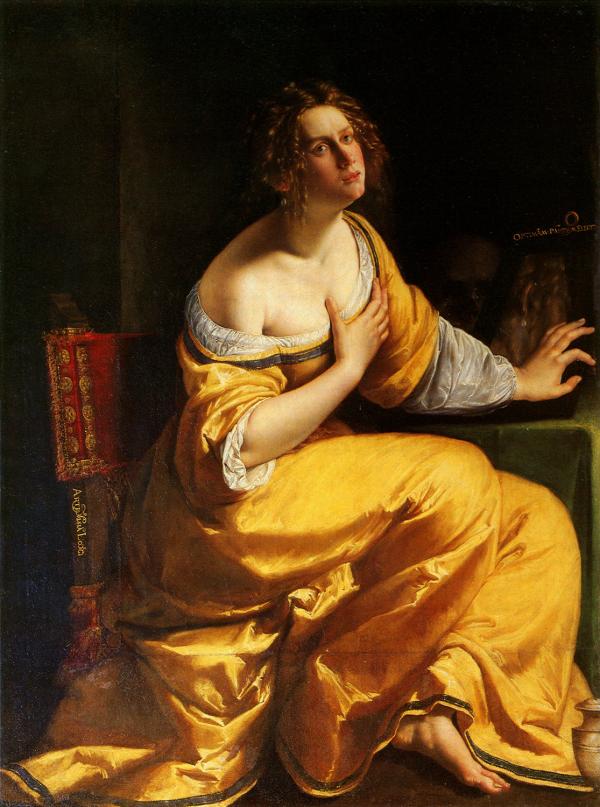
Who was Artemisia Gentileschi?
Artemisia Gentileschi, born in Rome in 1593, was an Italian Baroque painter.
Because her father was a painter, Gentileschi learned painting techniques at a very young age. Her first known painting was dated 1610 when she was just 17 years old. Despite her natural-born talent, Gentileschi faced challenges and prejudice because she was a woman in a male-dominated field. She was determined to continue painting. Her most famous pieces are powerful depictions of women in Biblical and mythological scenes.
Gentileschi’s career took her to Florence. While there, she married, had five children, and furthered her career as an independent female artist. She was admitted to the Academy of the Arts of Drawing in 1616. In her later years, she returned to Rome for a decade and then settled in Naples until she died in 1652.
Why is Artemisia Gentileschi’s art famous?
Gentileschi painted for wealthy royal families, church officials, and other art collectors across Italy. This earned her high praise and popularity. In addition, critics praised the way she conveyed light and shadow to create drama in her paintings. This is known as “chiaroscuro” in Italian.
Featured Artwork
The Conversion of the Magdalene (1615–16) In this painting, Gentileschi shows Mary Magdalene, a figure from the Bible. Gentileschi positions Mary with her gaze fixed in an upward direction. There’s also a mirror sitting near Mary that’s inscribed: PTIMAM PARTEM ELEGIT, which means “She chose the better part.” This references a Bible story that most people in the 17th century would have recognized.
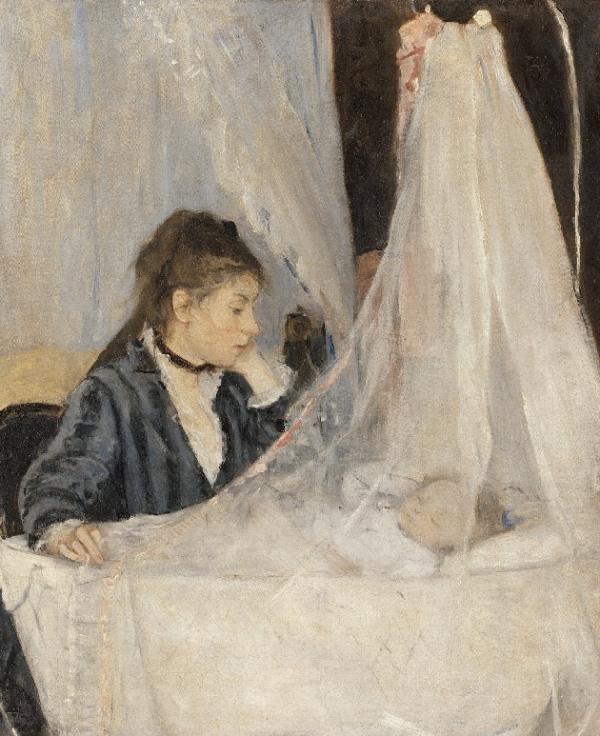
Who was Berthe Morisot?
Berthe Morisot, born on January 14, 1841, in Bourges, France, was the only female figure associated with the development of the Impressionist movement.
Her family was wealthy, so she was able to take art lessons and study paintings from an early age. She’d often paint outside, which was a key characteristic of the Impressionists. In 1864, her skill was firmly established, and she exhibited with the prestigious Salon de Paris. Throughout her career, her paintings mostly focused on women in domestic scenes and everyday landscapes. She filled her paintings with quick brushstrokes that gave the viewer a quick glimpse into the subject’s life.
Although Morisot’s art was celebrated during her time, it was still very unconventional for a woman to be a professional artist. She often hid the fact that she was an artist. Sometimes she would even put all her paintings and materials out of sight when people visited her house. Her talent was obvious though. She exhibited at every Impressionist show except for the one that directly followed the birth of her child.
Later in her career, Morisot continued experimenting with light and color but focused more on portraits. She is especially known for capturing the subject’s personality and emotions.
Morisot suffered from health issues and passed away in 1895 at the age of 54.
Why is Berthe Morisot’s art famous?
Morisot’s art is famous, in part, because she was the only female associated with the development of Impressionism. Aside from that, she had a wonderful sense of light and color. Her paintings were often raw and emotional and left the viewer wanting more. She firmly believed in using her paintings to capture passing moments instead of completely staged and finished scenes.
Featured Artwork
The Cradle (1872) In this painting, Morisot captures an intimate moment between her sister, Edma, and her sleeping child, Blanche. This was the first time Morisot featured motherhood as the subject of her art. Morisot exhibited this piece in 1874 but couldn’t find a buyer for it after the show. The Louvre eventually bought the piece in 1930.

Who was Gabriele Münter?
Gabriele Münter was a talented German Expressionist artist who lived from 1877 to 1962. She was born in Berlin and showed a love of art from a young age. Münter took private art lessons and also studied at the Ladies' School of the Düsseldorf Arts Academy.
One of Münter's most famous relationships was with another renowned artist, Wassily Kandinsky. They worked together and influenced each other's art. Münter was part of a group called "The Blue Rider," which included Kandinsky and other artists who shared similar ideas about art.
By the early 1900s, Münter had developed her own artistic style. Her paintings are known for their bold colors and unique style. She often painted scenes from her travels. These paintings captured the beauty of landscapes and cityscapes. Münter also created highly praised woodcuts. In 1907, she moved to Paris and held her first solo exhibition just a year later.
Despite the challenges of World War 1 and 2, Münter’s work remained popular throughout her lifetime. Even in the 1950s, her work was exhibited at least once each year in German museums and galleries.
Why is Gabriele Münter’s art famous?
At first, Münter's artwork became popular because of her involvement with “The Blue Rider” group of artists. This and her association with Kandinsky gave her art a wide audience.
On a deeper level, Münter's art stood out because of her colorful, expressive style. She used bold colors and thick smears of paint to give her artwork energy, a technique that was innovative during that time. Interestingly, she also painted so quickly that she could finish a large canvas in one day. This speed gave her artwork a sense of movement.
Featured Artwork
The Blue Gable (1911) This is one of Münter's most celebrated paintings. It shows her characteristic bold use of color as it depicts a relatively simple scene. A white haystack and a dark tree stand in the foreground while blue and other vibrant colors take charge of the background features.
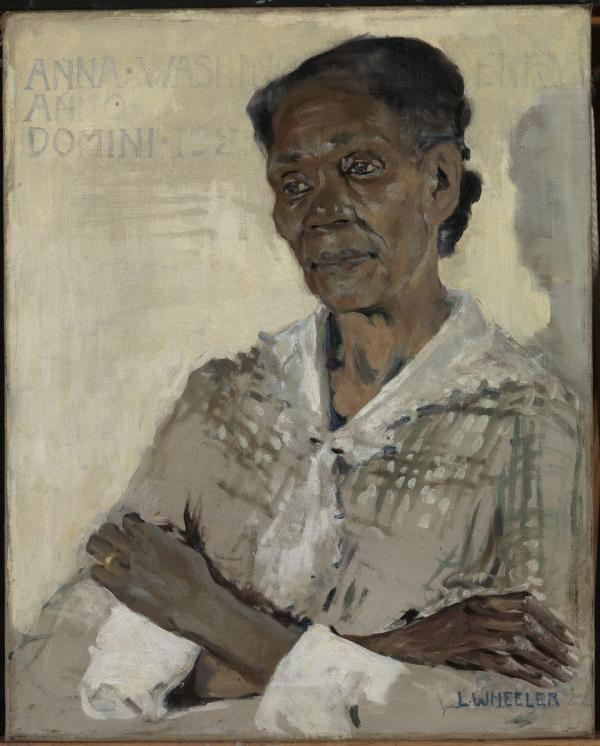
Who was Laura Wheeler Waring?
Laura Wheeler Waring (1887–1948) was an American artist and educator. She is best known for the African American portraits she created during the Harlem Renaissance, as well as her landscapes and still-life paintings.
Waring was born in Hartford, Connecticut, to a well-educated family. Her mother was also an amateur artist and often took Waring and her siblings to museums and local art events. Even as a small child, Waring would draw portraits, using her brothers and sisters and models.
Waring’s professional artistic journey began as she taught classes at the Institute for Colored Youth (now called Cheyney University). She saved her salary from that job to pay for classes at the Pennsylvania Academy of the Fine Arts. In 1914, she became the first Black woman to receive the prestigious A. William Emlen Cresson Memorial Travel Scholarship. This award allowed her to study art at the Louvre in Paris. During her time there, she frequently visited a famous garden called the Jardin du Luxembourg. This location inspired many of her paintings. While in Europe, she was also inspired by the work of the Impressionists and Post-Impressionists.
Waring returned to the United States for a period before traveling back to Europe again. She continued learning and painting and also illustrated an important magazine during the Harlem Renaissance. In 1926, she had important exhibitions at the Corcoran Gallery in Washington, D.C., the Brooklyn Museum, and the Philadelphia Museum of Art.
Throughout her career, Waring painted portraits of people like W. E. B. Du Bois, Alma Thomas, James Weldon Johnson, Mary White Ovington, and Marian Anderson. Today, her paintings are held by museums like the Smithsonian American Art Museum, the National Portrait Gallery, and the National Archives.
Why is Laura Wheeler Waring’s art famous?
Waring painted realistic portraits of African Americans—something that was very unusual for the time. These portraits celebrated the art, culture, and accomplishments of the Black community. In many ways, Waring was using her art to advocate for the civil rights of African Americans.
Featured Artwork
Anna Washington Derry (1926) In this portrait, Waring painted a working-class woman in a brown dress. The woman, Anna Washington Derry, was a servant who did laundry. People of Anna’s social class rarely sat for portraits, but in this piece, Waring brilliantly captured the dignity and tenacity of a working-class woman.
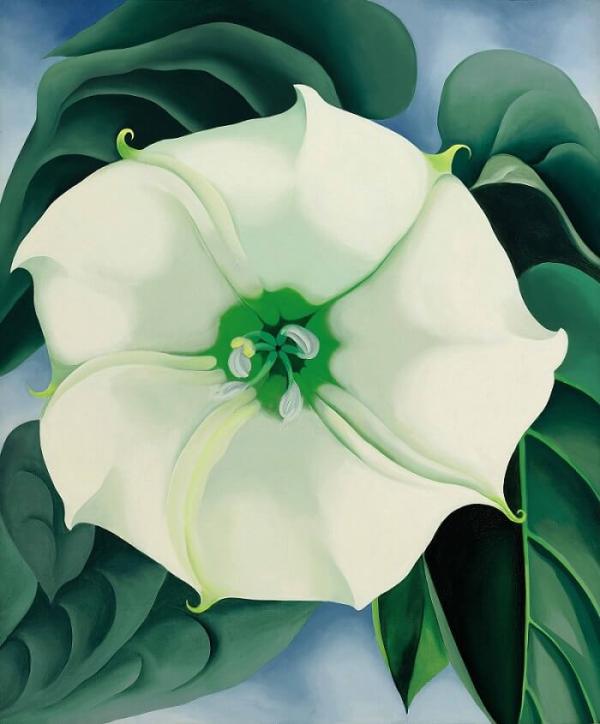
Who was Georgia O’Keeffe?
Georgia O’Keeffe (1887-1986) was born on a farm in Wisconsin. She already had dreams of being an artist by the time she was 10 years old. While she was young, she trained with a local watercolorist.
When she was 17, she began attending the Art Institute of Chicago. The typical style in her art classes was reproducing the artwork of the Masters, but she didn’t feel a personal connection to this type of painting. It was then that she turned to abstract painting. She took things from nature, like clouds and waves, and began to paint them as abstract shapes. This was a fresh, new idea in New York City, where she was living at the time.
In 1916, a friend mailed some of O’Keeffe’s abstract charcoal drawings to a gallery owner. He exhibited her drawings, and O’Keeffe had her first solo exhibition in 1917. In the years that followed, O’Keeffe painted skyscrapers. She also painted large-scale, detailed close-ups of flowers. In many of her pieces, the scale of the flower is changed so much that it almost appears abstract. In the early 1930s, O’Keeffe began painting rich desert landscapes in New Mexico.
O’Keeffe began going blind late in life. However, she kept painting with the help of assistants. She passed away when she was 98 years old. The Georgia O’Keeffe Museum in Santa Fe, New Mexico, is now home to hundreds of her paintings and drawings.
Why is Georgia O’Keeffe’s art famous?
Georgia O’Keeffe has been nicknamed “the mother of American modernism.” Her early work helped introduce America to abstract art, and her iconic flower paintings presented a totally new perspective.
Featured Artwork
Jimson Weed, White Flower No. 1 (1932) This piece is a great example of Georgia O’Keeffe’s style of painting flowers. The flower bloom is magnified so that viewers can see the rich details. In 2014, the painting sold for $44.4 million at auction. That was the highest price ever paid for a work of art created by a woman.
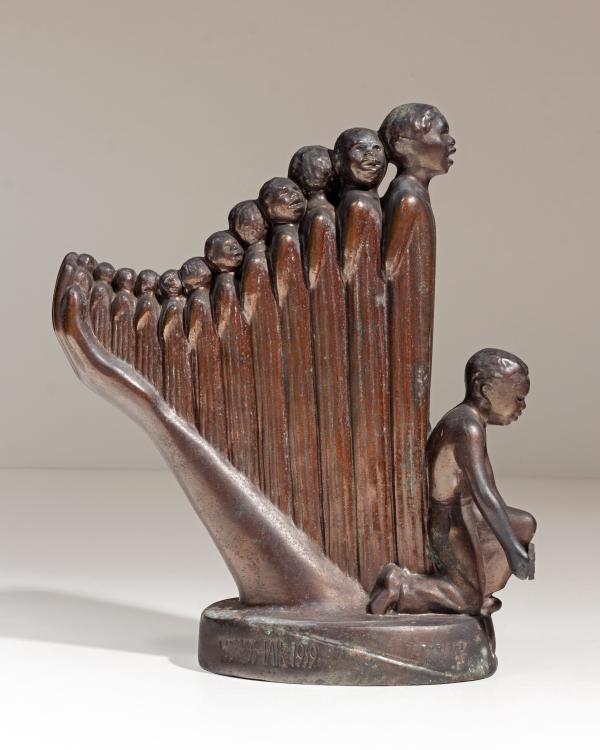
Who was Augusta Savage?
Augusta Savage was born in Florida in 1892. She enjoyed art from a young age, but from 1915 to 1919, her family was very strongly opposed to her art and clay was so scarce that Savage couldn’t do any sculpting work.
However, she was able to get her hands on clay in 1919 and was inspired to move to Jacksonville, Florida, to pursue art. Things were difficult there, so she later moved to New York City. She made busts of several prominent people. One of her busts earned her a fellowship in Paris. While she studied there, she exhibited her work, and she received another fellowship and a grant to travel across Europe.
She returned to New York City in the 1930s to work as a sculptor and an art teacher in Harlem. Through the Harlem Community Art Center, she inspired the careers of many African-American artists. In 1937, she was hired to create a sculpture for the New York World’s Fair. Two years later, she opened the Salon of Contemporary Negro Art, a small gallery, but it closed soon after due to lack of money.
Throughout her career, Savage had been an advocate for civil rights and women’s rights, but by 1945, she had become discouraged and moved upstate to Saugerties, New York. She didn’t make much art after that. She died in 1962 after a battle with cancer.
Why is Augusta Savage’s art famous?
Augusta Savage overcame numerous financial and racial barriers as she created sculptures, taught students in Harlem, and fought for racial equality.
Featured Artwork
The Harp (1939) This 16-foot sculpture was exhibited at the 1939 New York World’s Fair. It depicted 12 black singers that gradually got taller and formed the strings of a harp. The arm of God served as the sounding board. Savage was inspired by a song from 1900: “Lift Every Voice and Sing.” Unfortunately, there wasn’t any money available to store or preserve the sculpture, so it was destroyed after the fair ended.
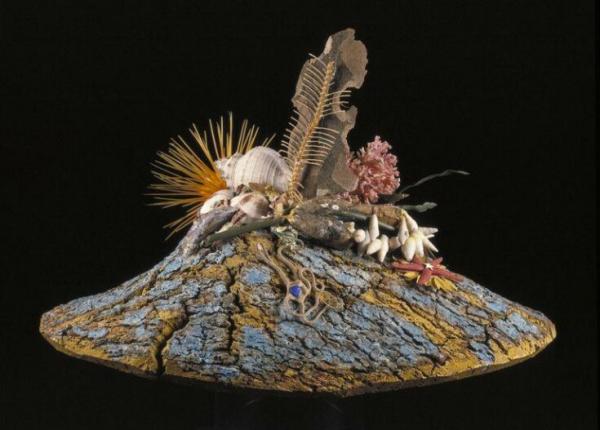
Who was Eileen Agar?
Eileen Agar was born in 1899 in Buenos Aires, Argentina. She went on to become a prominent Surrealist artist, photographer, and writer.
When she was six, Agar began attending boarding school in England. A teacher there noticed her artistic skill and encouraged her to explore it. As she grew older, she studied at traditional art schools but found them to be too formal. In 1921 she began studying at the Slade School of Fine Art in London.
As a young adult, Agar found it difficult to separate from her parents, but she committed herself to art. By 1927, Agar had her own studio space and began experimenting with styles and art movements like Cubism and Surrealism. In the early 1930s, she held a solo exhibition in which most of her paintings could be defined as Surrealist. Shortly after that, she began experimenting with assemblage (putting together different objects to make art). Agar was known as a free-spirit, an adventurous artist who was always experimenting with materials and techniques.
In 1936 she exhibited at the most famous Surrealist art show, the International Surrealist Exhibition in London. She was the only woman to exhibit there. That show drastically increased her popularity and, from there, she took part in Surrealist exhibitions in New York, Tokyo, Paris, and Amsterdam.
During her career, Agar traveled across the globe. She created fashion pieces, modeled dresses, designed sculptures, created paintings, took photographs, and pieced together collages. She had an incredibly diverse career and continued her artistry until her death at 91.
Why is Eileen Agar’s art famous?
Agar’s personal artistic style was a combination of the real and the surreal. She tapped into her unique creative freedom to produce art that was part abstract, part Surrealist. Often, her pieces were so experimental that they didn’t fit within any single label. She was always pushing the boundaries of traditional art.
Featured Artwork
Ceremonial Hat for Eating Bouillabaisse (1936) This piece is a perfect example of how Agar took Surrealist ideas and applied them to mediums other than painting. The hat has a cork base and is adorned with several items from the beach: lobster shells, fish bones, and coral. She originally created it for the International Surrealist Exhibition in London, but she also wore it during an interview with a fashion reporter and posed in it for a portrait painting.
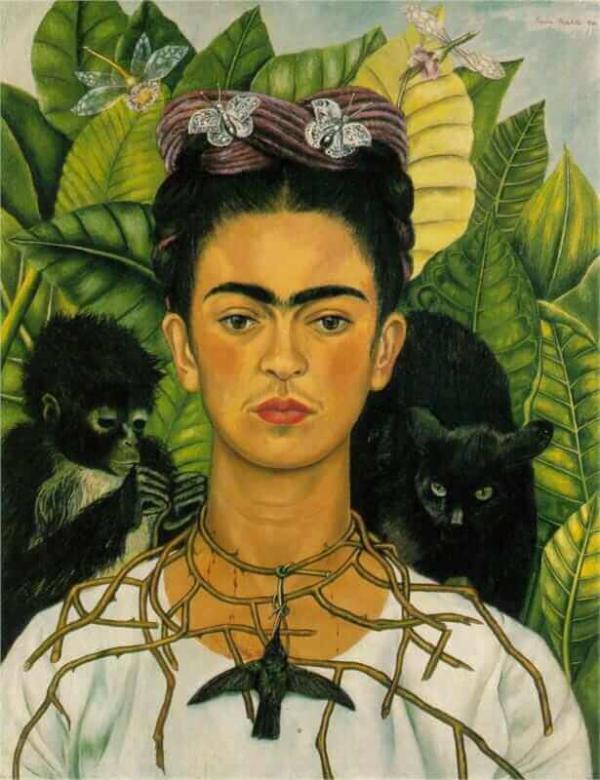
Who was Frida Kahlo?
Frida Kahlo, born July 6, 1907, in Coyoacán, Mexico, was a remarkable painter. She is best known for her self-portraits and other paintings that vividly explore themes of identity, emotions, and the human body. Although she did not want her art to be labeled, her work is often linked to the Surrealist movement.
Throughout her life, Kahlo had many triumphs and just as many challenges. She suffered from polio as a child. Later, when she was eighteen, she was involved in a bus accident that left her crippled. She faced 35 medical operations during her recovery, but her unbreakable determination led her to teach herself to paint.
These difficulties, along with Kahlo’s tumultuous marriage to fellow artist Diego Rivera, were inspirations for her artwork. She expressed her emotions and personal experiences through vivid self-portraits. Her art often included symbols of her Mexican heritage as well.
She was considered an amateur artist until the early 1930s when she began to seriously develop her skills and unveil her personal style. In 1938, she sold her first paintings. Shortly after that, she had her first solo exhibition in New York City. In 1939, the Louvre bought a self-portrait painted by Kahlo and she began painting with new intensity.
Kahlo painted approximately 200 pieces during her lifetime, many of them depicting pain and loss. Still, Kahlo was an incredibly resilient person. Her first solo exhibition in Mexico came in 1953. She was bedridden at the time, but instead of staying home, she had a bed set up in the gallery so she could attend.
Kahlo’s health struggles increased throughout the late 1940s and the early part of the 1950s. She died in 1954. Today she is celebrated as one of the most creative women to ever pick up a paintbrush and is a feminist icon for women across the globe.
Why is Frida Kahlo’s art famous?
Kahlo’s paintings were intense and expressive. The story of her life brings even more drama to her artwork. Many of her paintings are incredibly personal, revealing her private life, struggles, and stories.
Featured Artwork
Self-Portrait with Thorn Necklace and Hummingbird (1940) As one of Kahlo’s most famous self-portraits, this piece represents her pain and struggles. The thorn necklace is a symbol of the health issues and failed personal relationships that hurt her deeply. On the other hand, the hummingbird is a symbol of her hope and resilience.

Who is Yayoi Kusama?
Yayoi Kusama was born in 1929 in Matsumoto, Japan. Even though her parents didn’t want her to be an artist, Kusama was persistent. Her mom wouldn’t buy her art supplies, so Kusama made art from mud and old sacks!
When she was 19, Kusama traveled to Kyoto to study traditional Japanese painting. She also experimented with abstract techniques. She held her first solo exhibition in 1952 in Japan.
She moved to New York City in 1958 and had her first art exhibit there in 1959. This is when she began creating “infinity net” paintings. This involved making thousands of tiny marks across a very large canvas and those marks looked as if they continued forever, into infinity. Her signature style of polka dots evolved from there.
Kusama was a major female artist in the 1960s and beyond as she worked within the Pop Art and Minimalism art movements. She has held several prestigious shows in recent decades. In 1993, she became the first woman to represent Japan at the Venice Biennale, an international art exhibition. In 2022, she revealed a large mosaic she created in Grand Central Station in New York City. It’s titled A Message of Love, Directly from My Heart unto the Universe.
Why is Yayoi Kusama’s art famous?
Kusama has been referred to as “the princess of polka dots.” The creativity she’s displayed with these dots and markings has made her work famous in paintings, performances, fashion, and other arts.
Featured Artwork
Mushrooms (2005) This piece features Kusama’s signature bright colors and vibrant dots. The dots make up the mushroom, while the background is a contrasting black with a light red pattern.
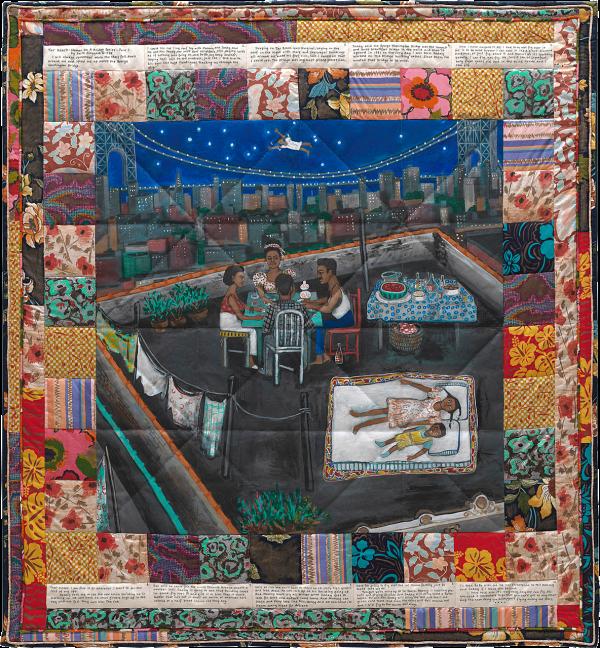
Who is Faith Ringgold?
Faith Ringgold, born in 1930 in Harlem, is a renowned African American artist, writer, and activist. Her artistic quilts tell the stories of her life and the stories of others in the Black community.
Ringgold’s mother had a background in fashion. As a young girl, Ringgold learned how to sew and often helped at her mother’s fashion shows. Quilting was also a part of Ringgold’s family traditions, so she learned how to quilt from her grandmother. Her childhood was also influenced by the artists, writers, and musicians who lived in her neighborhood during the Harlem Renaissance.
In 1950, Ringgold began studying art at New York’s City College. She earned a graduate degree in 1959. During the early 1960s, she began to find her own artistic style in paintings depicting the struggles of African Americans. Her paintings were inspired by African masks and the paintings of Jacob Lawrence, Pablo Picasso, and Henri Matisse. In 1967, she held her first solo exhibition.
By that time, her art was exploring themes of race, gender, and identity. She also became more involved in advocating for the inclusion of female art and African-American art in major museums. Around 1970, she started working with fabric. She produced her first major “story quilt” in 1980. Her style continued to evolve over time. In the 1990s, she incorporated pop art imagery into her quilts and sewed fabric onto canvas. In the 2000s, she began printing text on fabric pieces.
Throughout her career, Ringgold has received dozens of awards and honors. Her art is featured in major museums around the world, and she continues to inspire generations with her bold creativity and unwavering commitment to social justice.
Why is Faith Ringgold’s art famous?
Through her story quilts, Ringgold is able to blend fine art with crafts. She emphasizes family, community, race, and political activism. In addition, her personal activism has brought light to issues surrounding civil rights and women’s rights.
Featured Artwork
Tar Beach (1988) In this story quilt, Ringgold depicts a family in Harlem spending time on their “tar beach” (the rooftop of their apartment building). The daughter of the family dreams of flying over the George Washington Bridge. The fabric squares that form the border of the quilt feature text that tells the daughter’s story of freedom.
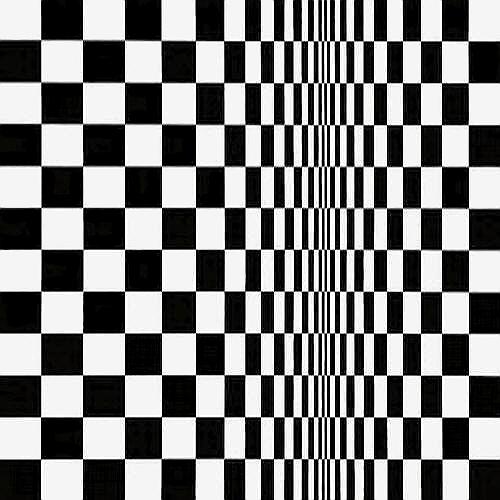
Who is Bridget Riley?
Bridget Riley, born on April 24, 1931, in London, is one of the most popular figures of the Op Art (optical art) movement. Her modern style uses abstract patterns and stark contrasts to produce art that tricks the eye.
As a child, Riley was free to roam the countryside around her home. She’d often watch the clouds passing and notice how the light shifted throughout the day. These seemingly simple childhood experiences inspired her to pursue art.
Riley studied at Goldsmiths College and the Royal College of Art in London during the 1950s. After that, she worked as an art teacher and a commercial illustrator. At this point, she didn’t have a personal artistic style. She was influenced by a mix of Impressionism, Pointillism, and Abstract Expressionism.
In the early 1960s, she gradually became interested in the artwork of Futurists like Boccioni and Balla. In 1962, she exhibited bold abstract pieces featuring geometric patterns and optical illusions. The show was a great success! In 1965, she debuted in the United States in a sold-out exhibition. During this time, her pieces were black and white. She didn’t introduce color into her art until 1967.
Throughout her career, Riley has experimented with color, form, and optical illusions. Her pieces are mesmerizing! Her works have been exhibited in prestigious galleries worldwide, including the Museum of Modern Art in New York and the Tate Gallery in London. She continues to paint today. Her most recent work has included murals and pieces inspired by her travels.
Why is Bridget Riley’s art famous?
Riley’s paintings challenge the traditional concepts of space and movement. She paints in a way that makes the viewer feel like the image is moving or vibrating or shifting in some other way. With the colors and forms she uses, she turns her art into an immersive experience.
Featured Artwork
Movement in Squares (1961) In this painting, Riley used a simple square to create a mesmerizing illusion. If you look closely, the width of the square changes as your eye progresses across the canvas. This technique results in an optical illusion! Riley has said it took just one sitting to complete the design for this artwork.
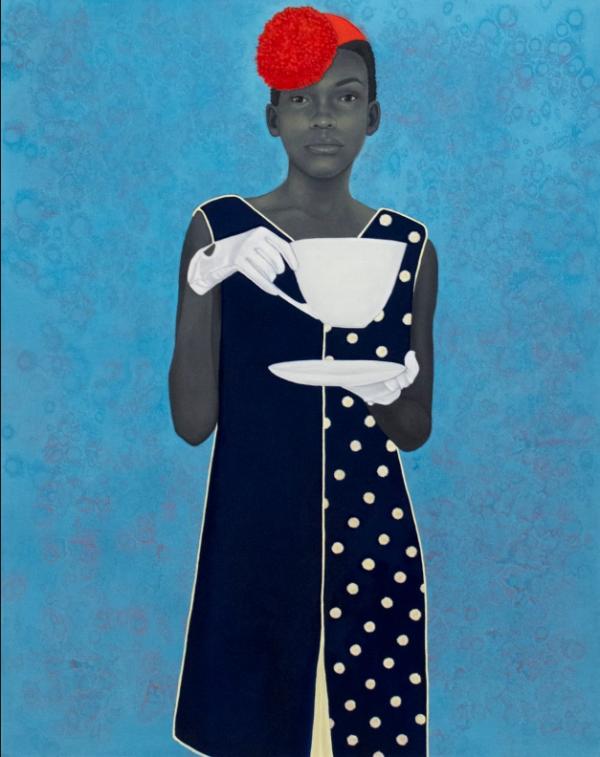
Who is Amy Sherald?
Amy Sherald is a contemporary portrait artist from the United States. She is best known for her portrait of First Lady Michelle Obama.
Born in 1973, Sherald developed a love for art while she was in elementary school. She’d often stay inside during recess so she’d have time to draw. Her parents wanted her to pursue a career as a doctor, but Sherald knew she wanted to be an artist. Still, she enrolled in a pre-med college program after high school. During her second year of college, she took a painting class and was inspired to commit to art studies.
In 1996, she worked as a resident artist at Maine College of Art and, the next year, she worked as a resident artist in Panama. In the early 2000s, she turned her attention to studying Abstract Expressionism at the Maryland Institute College of Art. Sherald developed her signature style of painting portraits during this time. She started by asking random people on the street if she could do a photoshoot with them. If they agreed, she’d take several photographs and create a large-scale painting based on those photographs. Then Sherald went to study in Norway. As she worked with a painter there, she experimented with using grisaille, a method of painting portraits in gray.
In 2016, Sherald won the National Portrait Gallery's Outwin Boochever Portrait Competition and her popularity skyrocketed. She was selected to paint Michelle Obama’s portrait in 2017 and hosted her first solo exhibition in 2018. Today, she continues to paint and produces roughly one dozen portraits each year.
Why is Amy Sherald’s art famous?
Sherald’s unique portrait style has been called “stylized realism.” Her pieces set the subject’s greyscale skin against a bright, monochromatic background. The surreal details show the subject’s personality and make the subject relatable to the viewer. Sherald has said that her artistic purpose is to create imaginative portraits of Black Americans with a nod to classic European portrait traditions. It’s a unique twist that avoids cultural stereotypes and instead, tells a story about what it means to be a Black person today.
Featured Artwork
Miss Everything (Unsuppressed Deliverance) (2016) The subject of this painting is a young Black woman wearing a bright red headpiece and an elegant navy dress. Her hands are covered in white gloves as she holds an oversized teacup. The woman appears confident as she peers directly at the viewer. Her gray skin is a stark contrast against the turquoise background.
